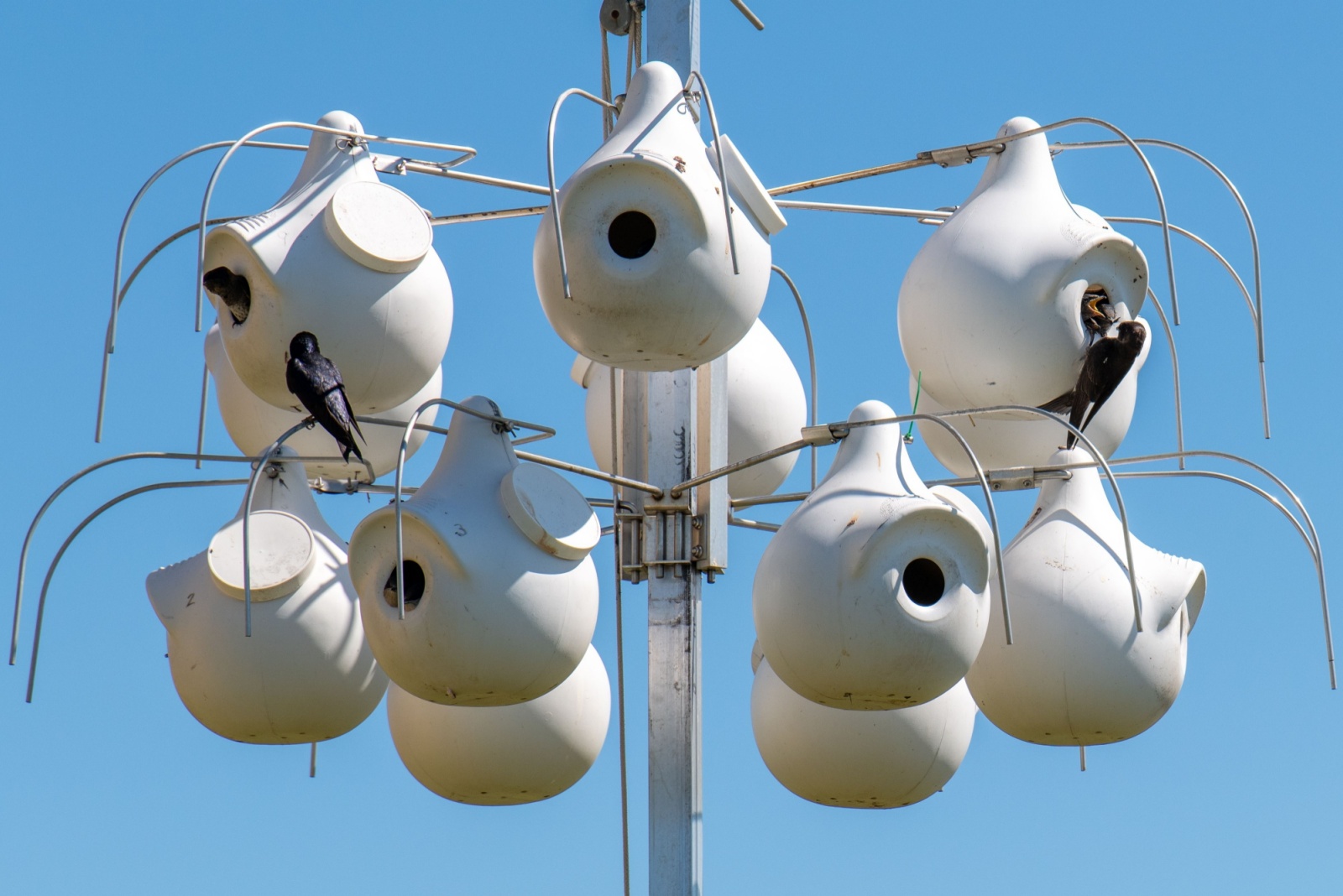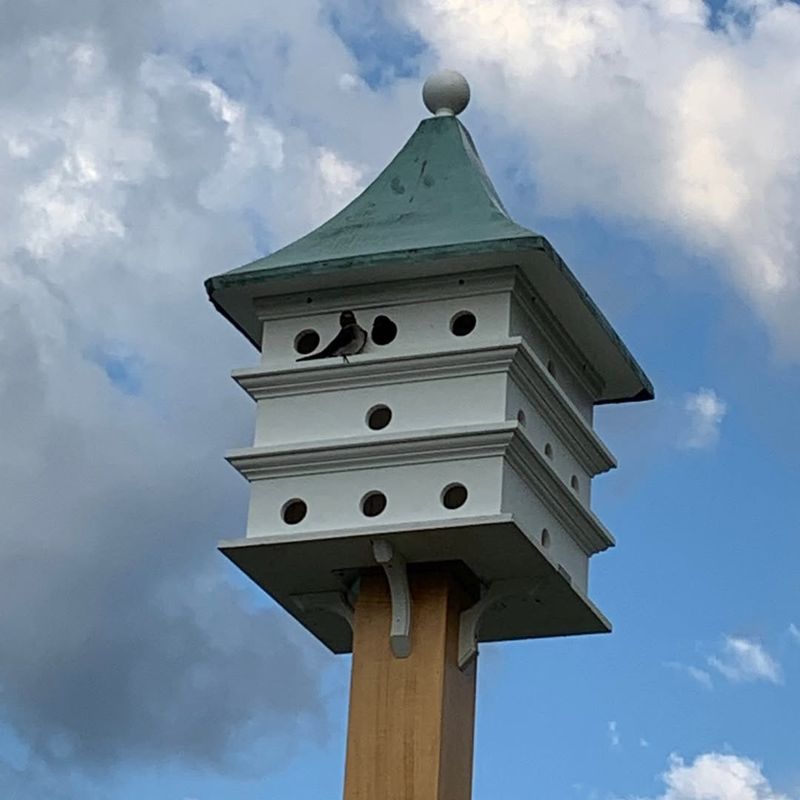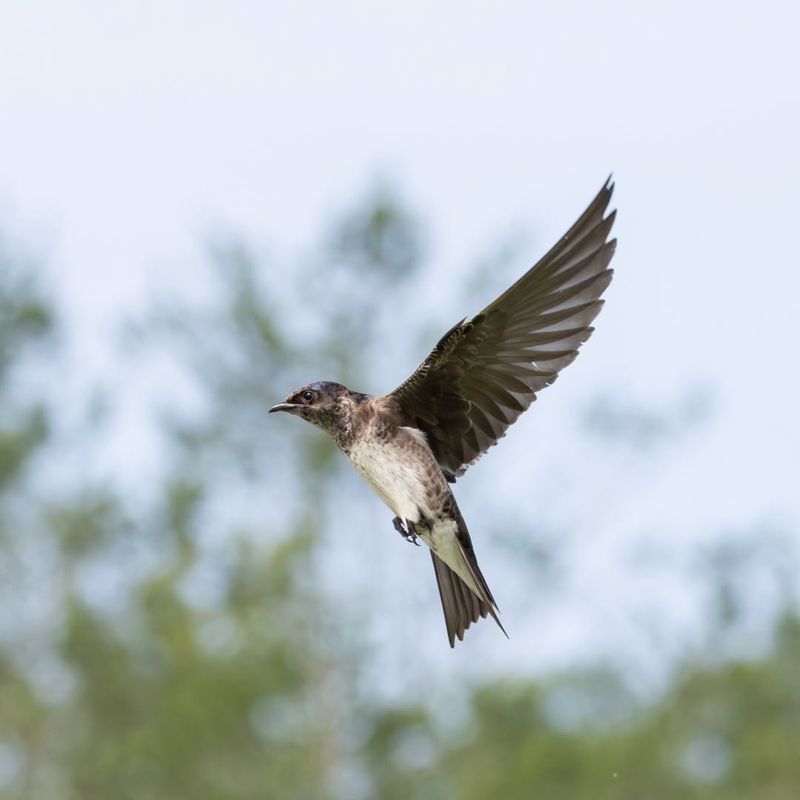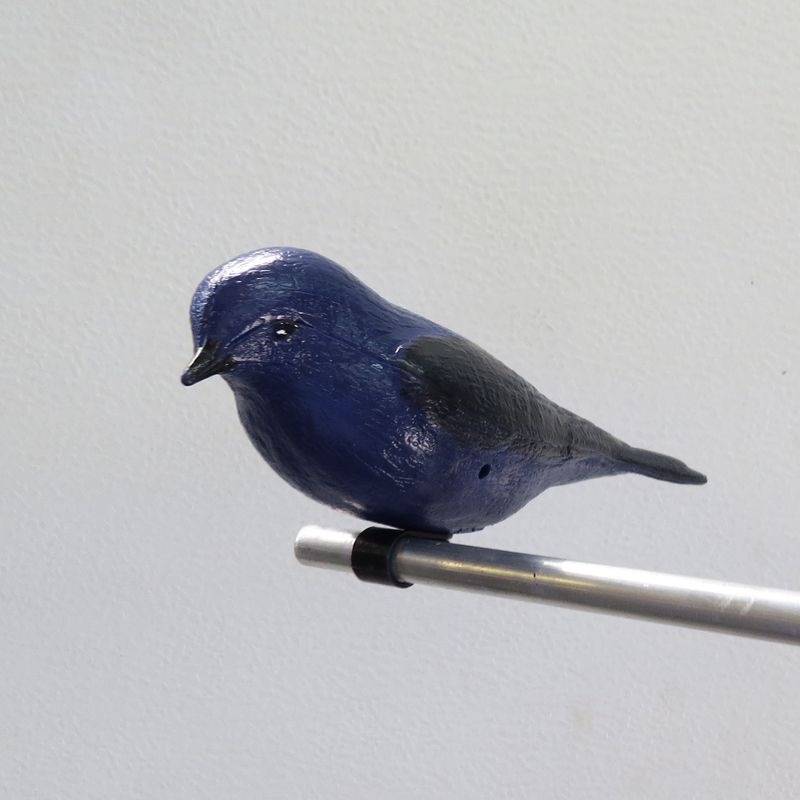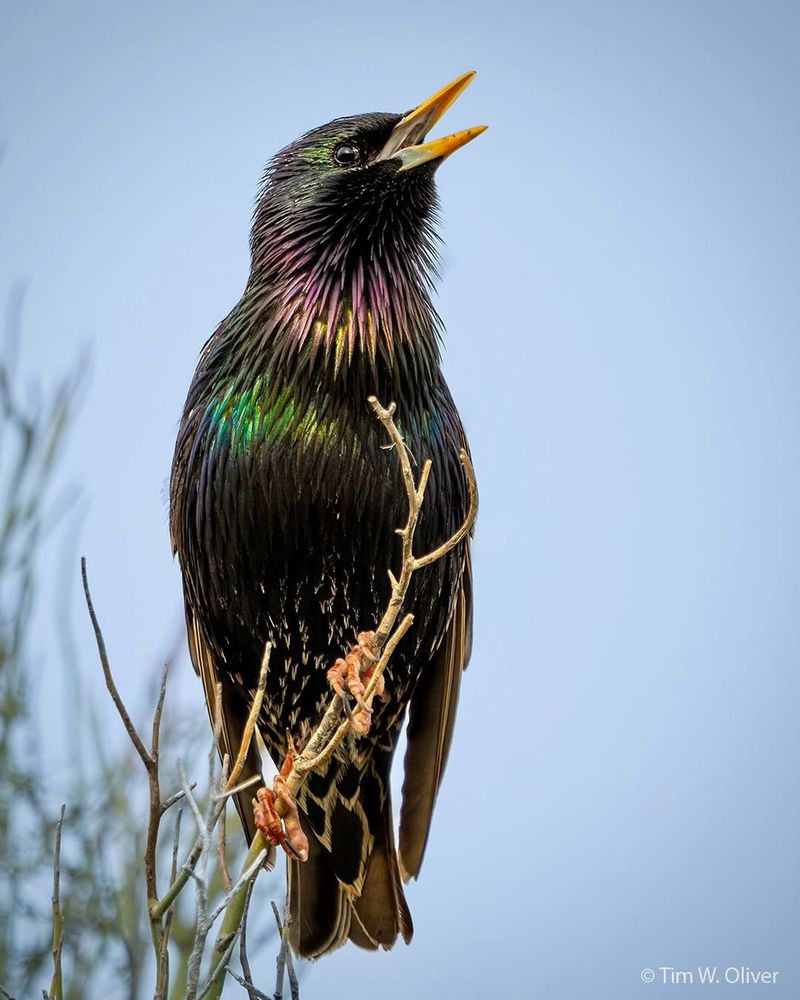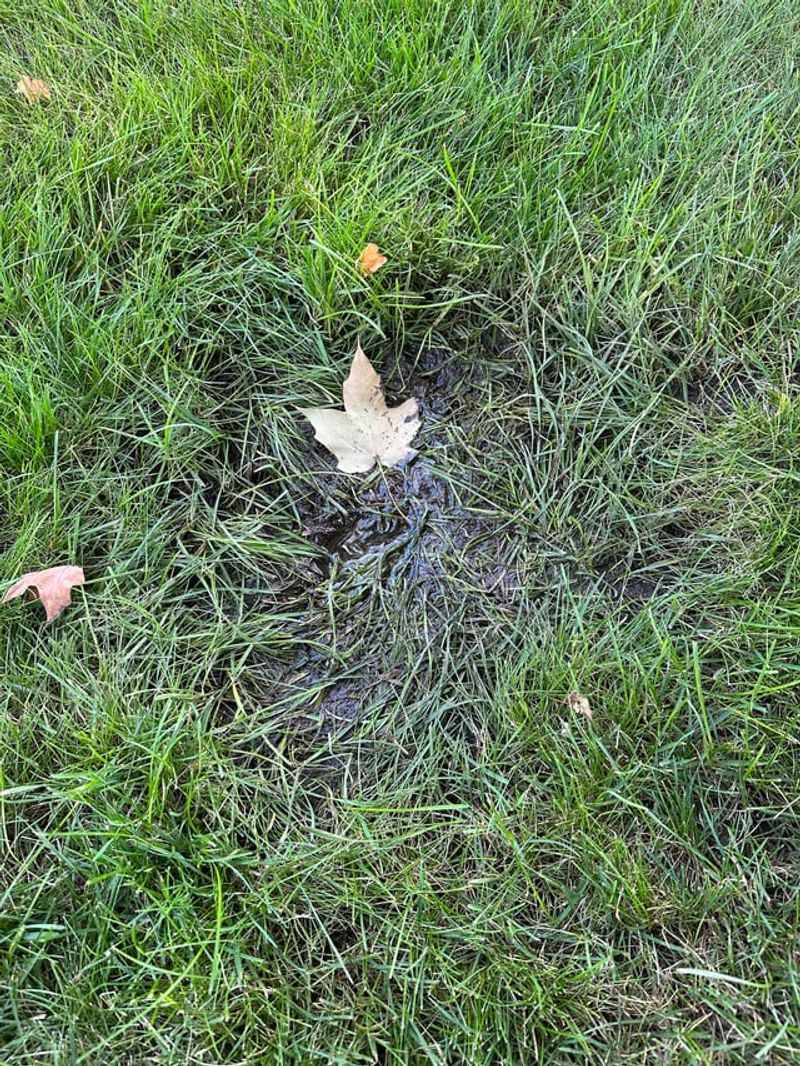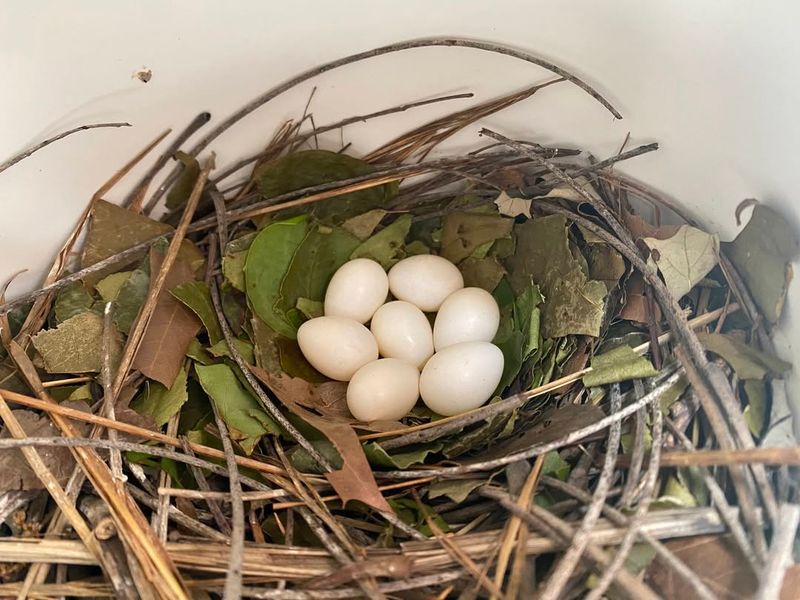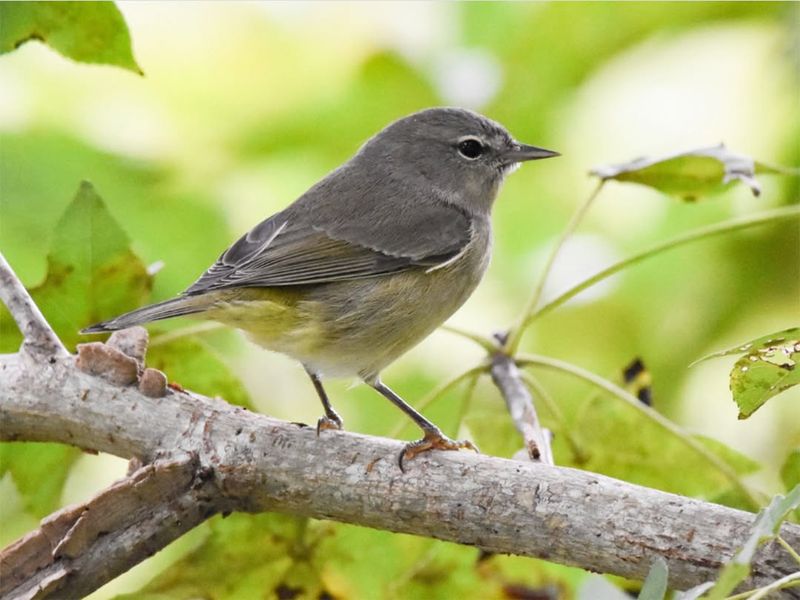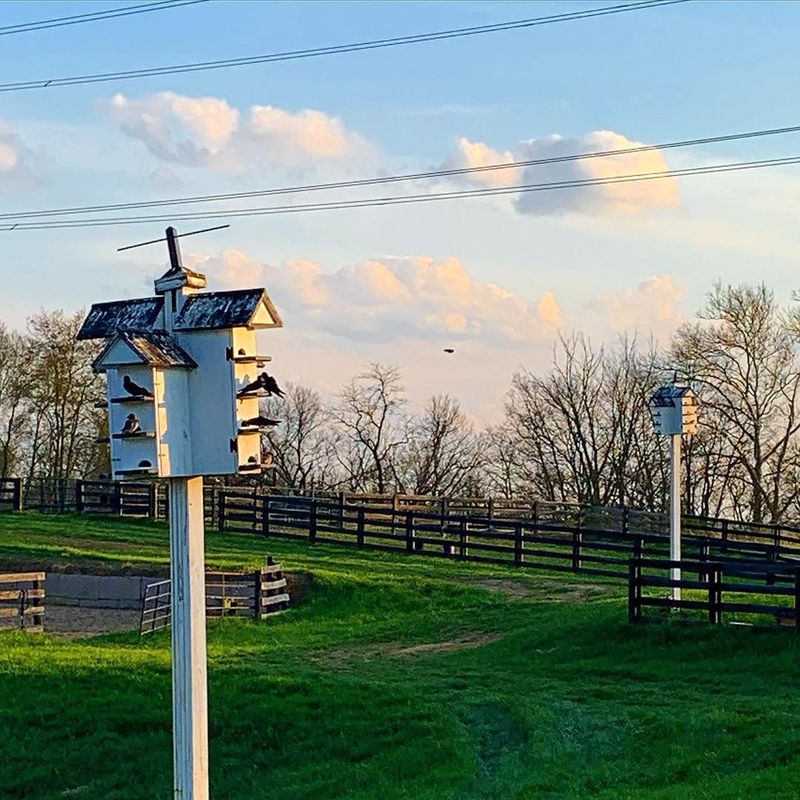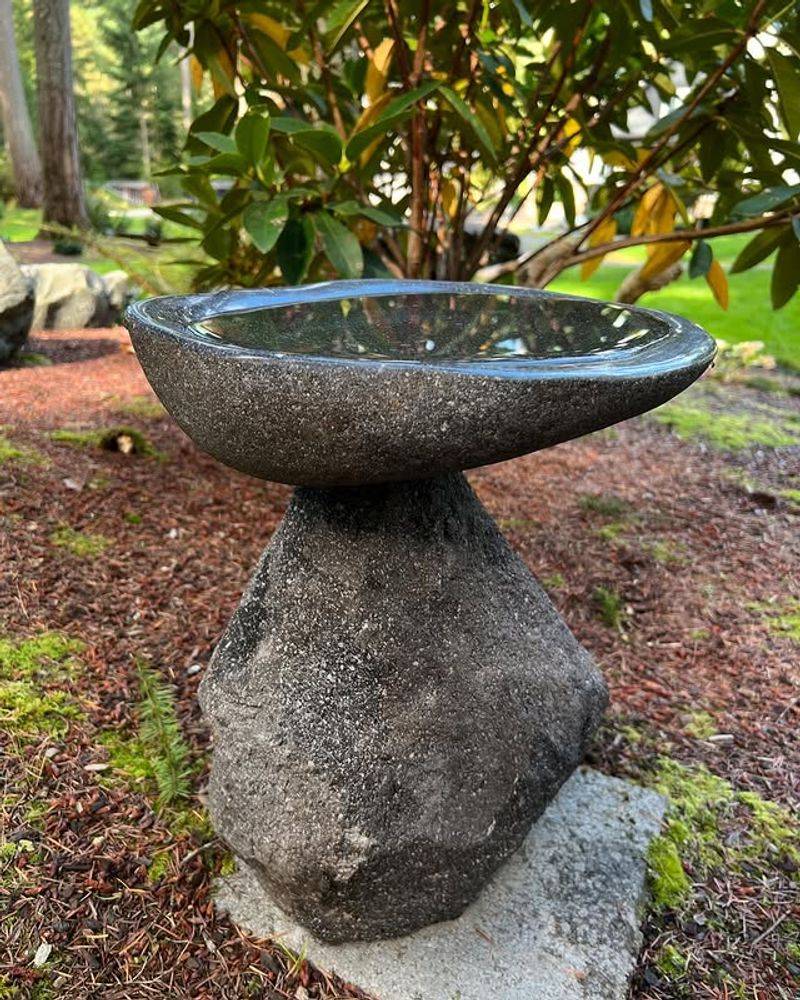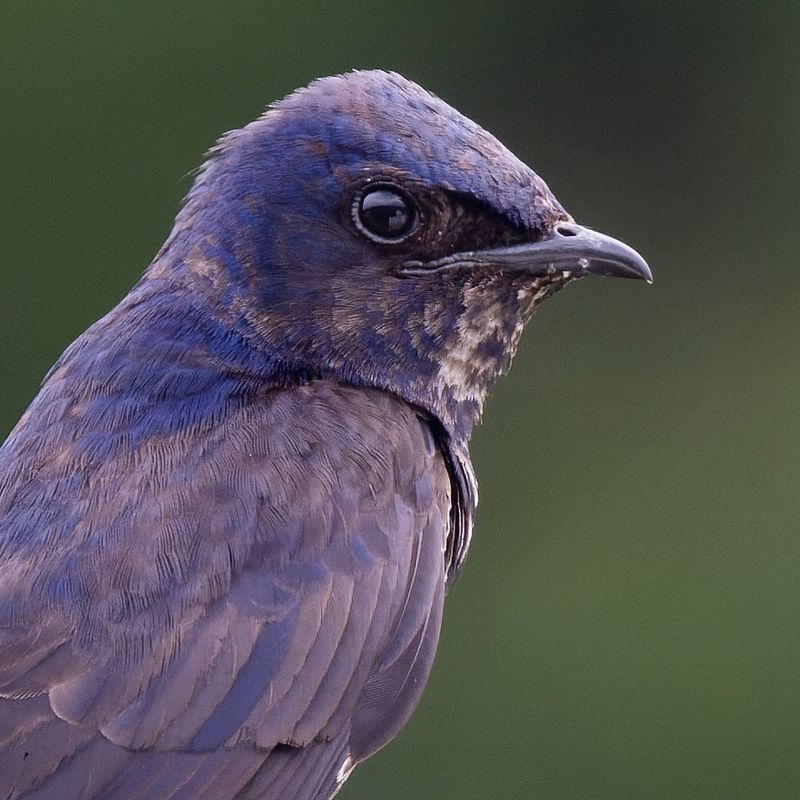Purple Martins, North America’s largest swallows, bring beauty and natural pest control to Virginia backyards each spring. These sociable birds return to the same nesting sites year after year, making your yard their seasonal home.
With a little preparation and the right setup, you can create an inviting habitat that will have these aerial acrobats choosing your property as their Virginia residence.
1. Install Proper Housing Early
Timing matters when it comes to Purple Martin housing. Set up your martin houses by mid-February in southern Virginia or early March in northern regions. These early birds begin scouting for homes weeks before they settle in for nesting.
Choose compartment-style houses or gourds mounted on poles at least 12-15 feet high. The height keeps predators away while giving martins a clear flight path. Remember to include proper ventilation and drainage in each compartment for healthy living conditions.
2. Create Open Surroundings
Purple Martins love room to soar! Place housing at least 40 feet from tall trees and 30 feet from buildings. These aerial acrobats need plenty of flying space and prefer open landscapes that let them swoop in from multiple directions.
Martins evolved to avoid predators by staying in open areas where they can spot approaching threats. A house surrounded by trees makes them nervous about hawks and owls hiding nearby. The more open sky access your martin housing has, the more attractive it becomes to these sociable birds.
3. Use Decoys To Signal Safety
Trick new martins into thinking your housing is already occupied! Mount plastic Purple Martin decoys on your houses or nearby perches to create the illusion of an established colony. First-time visitors are more likely to check out housing that appears already approved by other martins.
Position a few decoys in natural poses – some perched at entrances, others seemingly relaxed on porches. You can also play recordings of Purple Martin dawnsong during early morning hours in spring. Their distinctive chatter signals to passing martins that your location is a thriving, safe community.
4. Manage Competing Birds
European Starlings and House Sparrows frequently try to claim martin housing for themselves. Defend your martin colony by installing entrance holes specifically sized for martins – exactly 2⅛ inches in diameter or using special crescent-shaped openings that discourage these competitors.
Check houses regularly during pre-season and remove nesting materials from unwanted birds. Some dedicated martin landlords use specialized trap compartments for invasive species. Never allow competing birds to establish territories in martin housing, as they will aggressively drive away the more peaceful martins.
5. Provide Nearby Mud Sources
Martins use mud to reinforce their nests, making this resource essential for successful colonies. Create a small mud puddle area within 100 yards of your martin housing by keeping a patch of bare soil consistently damp during nesting season.
A simple method involves placing a shallow pan filled with clay-rich soil in your yard and keeping it moist. Martins particularly appreciate muddy spots after spring rains. You’ll often spot them gathering beakfuls of mud to transport back to their nests, using it to build nest cups and secure their homes.
6. Offer Supplemental Nesting Materials
Give your martin tenants a housewarming gift! Place small piles of pine needles, small twigs, and dried grasses on platforms near your martin houses. These natural materials help martins construct comfortable nests without long collection flights.
Some martin landlords even provide special nesting compartments with pre-formed cups of dried mud. Another popular offering is eggshells – crushed and dried chicken eggshells provide calcium for egg-laying females. Scatter these materials in March and April when nest-building activity peaks in Virginia.
7. Lower Housing During Non-Breeding Seasons
Maintenance matters! Once martins migrate south in late summer, lower your housing systems for thorough cleaning and repairs. Remove old nests, scrub compartments with a mild bleach solution, and inspect for damage or wear.
This annual cleaning prevents parasite buildup and disease transmission between seasons. While houses are down, check poles and mounting hardware for stability. Many successful martin landlords store clean houses in garages or sheds during winter, protecting them from weather damage and preventing early occupation by competing birds before martins return.
8. Install Predator Guards
Raccoons, snakes, and squirrels can devastate martin colonies overnight! Mount metal baffles on poles below housing to prevent climbing predators from reaching nests. The best guards are at least 36 inches in diameter and installed at least 4 feet above ground.
For snake protection, wrap poles with smooth metal stovepipe sections or commercial snake guards. Consider pole designs that deter owls and hawks from perching nearby. Some Virginia martin enthusiasts even install monofilament fishing line systems that discourage aerial predators without harming them.
9. Maintain Water Features Nearby
Purple Martins appreciate convenient water sources! They drink by skimming water surfaces during flight and also collect water for nestlings. A small pond, birdbath, or decorative fountain within sight of your martin housing adds major appeal.
For maximum effectiveness, position water features in open areas at least 10-15 feet from shrubs or hiding spots for cats. Martins particularly value water sources during Virginia’s hot summer months. The sight and sound of moving water also helps attract migrating martins scouting for ideal colony locations in spring.
10. Join Local Martin Conservation Groups
Connect with experienced “martin landlords” through the Purple Martin Conservation Association or Virginia-based birding groups. These knowledgeable enthusiasts offer location-specific advice about martin preferences in your exact region of Virginia.
Many groups host “colony visits” where you can see successful setups firsthand. Some members even share established breeding pairs to help newcomers start colonies. The social network provides troubleshooting help when challenges arise and celebrates your successes when martins finally choose your housing.

